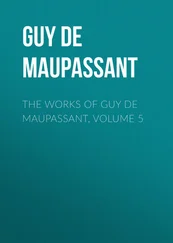Carnot’s theory was, however, based on Lavoisier’s mistake, that heat was an indestructible substance or element. This mistake was revealed by James Joule (1818–1889), a rich brewer from Manchester. In the brewery workshops, Joule measured the heat produced by passing electricity through water. His results showed electricity was being converted into heat, which was impossible if heat and electricity were two indestructible fluids. The fellows of the Royal Society were unimpressed by his findings, so Joule went back to the workshop and started meticulously measuring the small amount of heat generated by turning paddles in water. From these experiments it appeared that work could be quantitatively converted into heat. The cautious Royal Society again rejected Joule’s findings as impossible. Joule became so obsessed with proving his case that when on honeymoon in Switzerland, ignoring the romantic situation and scenery, he spent much of the time dragging his wife up and down a waterfall, trying to measure the temperature difference of the water between the top and bottom – an impossible task. Slowly, other scientists started paying attention to Joule; if work could be converted into heat, then heat could not be conserved, and perhaps heat could be converted back into work.
Joule’s revolutionary finding disturbed one particular scientist, the precocious William Thomson, later Lord Kelvin (1824–1907). Kelvin had joined Glasgow University at ten, was a professor by 22 and went on to a meteoric career in theoretical physics. He also had a strong practical streak, and made a fortune from his invention of telegraphy. Kelvin heard Joule describe his discoveries at a scientific meeting in Oxford in 1847 and afterwards he struggled with his inability to reconcile Joule’s finding that heat and work were incontrovertible with Carnot’s assumption that heat was indestructible but that the flow of heat drove work. The resolution of this conundrum produced two new laws for the Universe to ‘obey’: the First and Second Laws of Thermodynamics, joint products of the minds of Joule, Mayer, Kelvin, Helmholtz and Clausius. The First Law stated that heat and work (and other forms of energy) were incontrovertible but energy itself was indestructible. The infamous Second Law of Thermodynamics implied that although energy could not be destroyed in any conversion between its forms, it was inevitably ‘dissipated’ into other forms (mainly heat) less able to do work. Thus although work could be fully converted into heat, heat could not be completely converted into work, because, as Carnot had indicated, part of the heat had to be released to the cold sink in order that the flow of heat could continue and this heat could not then be converted to work. The implication of the Second Law was that all energy was continually running down or ‘dissipating’ into heat. Therefore the clockwork Universe must eventually run down unless there was something – or someone – outside the Universe to wind it back up again.
The First Law showed that heat could not be indestructible and this led to the resurrection of an old theory that heat (and perhaps all forms of energy) were hidden forms of motion. In hot water, water molecules move around very rapidly, while in cold water the molecules move slowly: when hot and cold water are mixed, the rapidly moving molecules of the hot collide with the slow-moving molecules of the cold, slowing the rapid molecules and speeding up the slow molecules which results in lukewarm water. Thus, the transfer of heat is really a transfer of motion. The exchange between all types of physical force in a common currency of energy gave a great unity to late-nineteenth-century science; a unity missing in the eighteenth century when electricity, magnetism, heat, light and work were all different and discussed in different terms. In the nineteenth century, because these apparently different physical forms could be interconverted they came to be regarded as different forms or manifestations of one thing: energy. But energy was not a type of matter but rather the motion or arrangement of matter. This concept of energy gave a new boost to the hopes of mechanists, who thought they might finally be able to describe everything in the Universe in terms of matter in motion. It has been argued that the origin of this energy concept was partly due to new concepts in accountancy accompanying the rise of industrialization: it is certainly true that energy acted as a new currency within physics keeping track of mechanical transactions. Prior to the 1850s ‘energy’ did not exist as a useful concept in science, afterwards it became the central concept. However, the word ‘energy’ entered the English language in the sixteenth century, meaning roughly ‘vigour of expression’, and later ‘vigour of activity’. Originally the word was derived from Aristotle’s term energeia , meaning actuality/activity; this in turn is derived from the Greek en for in or at and ergon for work. Today the word ‘energy’ has a rather schizoid existence, meaning something technical and quantifiable to scientists, but having a variety of metaphorical meanings in the wider community.
The scientific concept of energy did not arise purely from physics, but also at the same time from biology. Indeed the principle of energy conservation was simultaneously discovered by about twelve different scientists but was first formulated by the physicians Mayer and Helmholtz with reference to the forces of life. Robert Mayer (1814– 1878) was a German physician with an unlucky life. A mediocre student, he was arrested and expelled for joining a secret society. He eventually graduated and joined a ship bound for the East Indies as the ship’s doctor. At that time doctors still followed Hippocrates and Galen’s advice to bleed patients for a variety of maladies. While bleeding sailors in the East Indies, Mayer was alarmed to find that blood from the veins was much redder than usual, almost like arterial blood. At first, he worried he was puncturing arteries by mistake but local doctors assured him it was normal for venous blood to be redder in the tropics than in the cold north. This set Mayer thinking. He knew that Lavoisier had proposed respiration functioned to produce heat for the body and he also knew that the change from red to blue blood from arteries to veins was due to the removal of oxygen from the blood for respiration. Thus redder blood in the veins of a sailor in the tropics might be due to less respiration and heat production, which would make sense since the body needed to produce less heat in the tropics than the cold north. He also knew Lavoisier had shown men doing hard work respired more but had not given a convincing explanation of this important finding. Mayer proposed that fuel, heat and work were interconvertible: that it was possible to convert one into the others. Thus work done by men could be produced from heat (as in a steam engine) and this heat could in turn be produced by respiration (the burning of food). More work required more heat and more respiration as Lavoisier and Séguin had found experimentally. This reasoning, although partly wrong, was definitely getting closer to the secret of the energy of life.
When Mayer got back to Germany he wrote up his ideas in a scientific paper, but his thinking was muddled and the paper was rejected. On a second attempt he sent the paper to von Liebig, who published it in 1842. However, when von Liebig published soon after a related theory, Mayer accused him of plagiarism. As Schwann would have agreed, it was not wise to oppose the powerful von Liebig. Mayer then got into even deeper water when he started a priority dispute with Joule as to who had first thought of the conservation of energy. But Mayer lost both arguments due to his unestablished position. The ‘Joule’ is now the standard scientific unit of energy and the ‘Kelvin’ the standard unit of temperature, while Mayer’s name is nowhere to be seen in the virtual world of scientific units. Understandably, he became depressed, suffering a mental breakdown and attempting suicide.
Читать дальше












